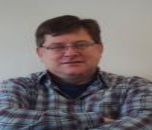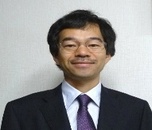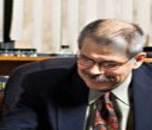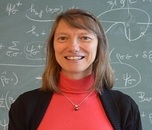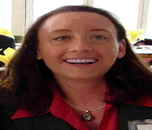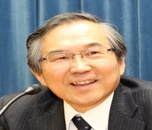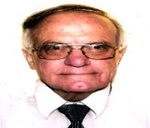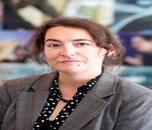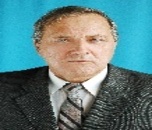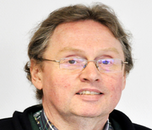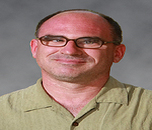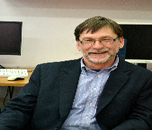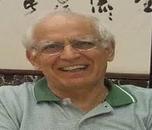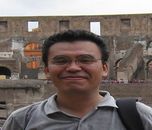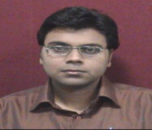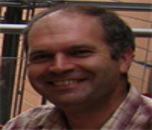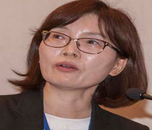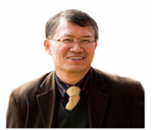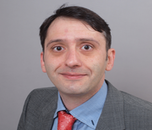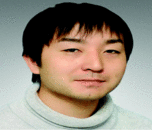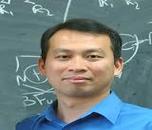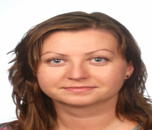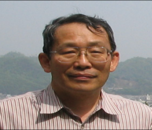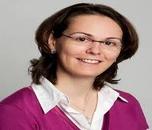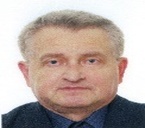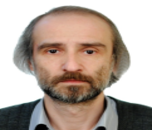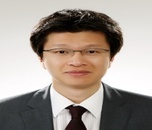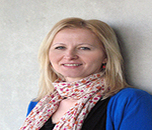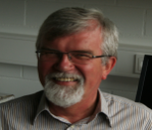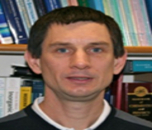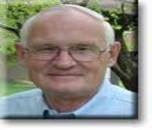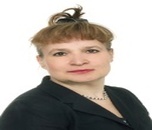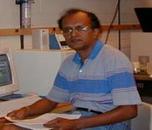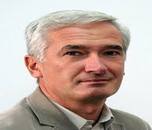Theme: A Meeting at the Interface on Theory and Experiment
Physical Chemistry 2017
Physical Chemistry 2017 which is going to be held during September 18-19, 2017 in Dublin, Ireland aims to gather academia and business research people at the same platform to explore the theme as "A Meeting at the Interface on Theory and Experiment".
Physical Chemistry is the application of physical principles and measurements to understand the properties of matter, as well as for the development of new technologies for the environment, energy and medicine. Advanced physical chemistry topics include different spectroscopy methods (raman, ultrafast and mass spectroscopy, nuclear magnetic and electron paramagnetic resonance, statistical mechanics, x-ray absorption and atomic force microscopy) as well as theoretical and computational tools to provide atomic-level understanding for applications such as: nanodevices for bio-detection and receptors, interfacial chemistry of catalysis and implants, electron and proton transfer, protein function, photosynthesis and airborne particles in the atmosphere.
Chemistry Conferences are gathering of group of people to share their research ideas and knowledge of specific techniques and topics in Chemistry field. Meet Directors, CEOs of Petroleum Exploration companies, Equipment and Service provider companies, and Distribution companies in the field of Organic Chemistry, Inorganic Chemistry, Medicinal Chemistry, Physical Chemistry, Analytical Chemistry, Theoretical Chemistry ,Biochemistry, Biotechnology, Chemical Engineering, Materials Science, Nanotechnology from Rome, Italy at Chemistry Conferences.
ConferenceSeries Ltd Organizes 1000+ Global Events Every Year across USA, Europe & Asia with support from 1000 more scientific societies and Publishes 700+ Open access journals which contains over 100000 eminent personalities, reputed scientists as editorial board and organizing committee members. The conference series website will provide you list and details about the conference organize worldwide. Chemistry conferences are gathering of group of people to share their research ideas and knowledge of specific techniques and topics in chemistry field in Chemistry Conferences. Frequently there are more than a few speakers within each conference, and these speakers are experts in chemistry fields. In these Chemistry Meetings several topic reviews are programmed each day throughout the conference, and participants can usually make their choice of topics from among these scheduled international events. To discuss the issues and accomplishments in the field of engineering Conferenceseries International Conferences has taken the initiation to gather the world class experts both from academic and industry in a common platform at its Chemistry conferences.
Track 1: General Physical Chemistry
Physical Chemistry is the branch of chemistry dealing with the physical properties of chemical substances. It is one of the traditional sub-disciplines of chemistry and is related with the application of the concepts and theories of physics to the study of the chemical properties and reactive behaviour of matter.
Related Chemistry Conferences | Chemistry Meetings | Physical Chemistry
World Congress on Plasma Chemistry, November 13-14, 2017, Lisbon, Portugal; International Conference on Electrochemistry, July 10-11, 2017, Berlin, Germany; International Conference on Photochemistry and Spectroscopy, June 29-30, 2017, Baltimore, USA; 3rd World Chemistry Conference, September 11-12, 2017, Dallas, USA; 4th World Congress on Mass Spectrometry, June 19-21, 2017, London, UK; 19th International Conference on Physical Chemistry, March 9 - 10, 2017, Miami, USA; Physical Organic Chemistry (GRS), June 24-25, 2017, Holderness, NH; 11th Triennial Congress of the World Association of Theoretical and Computational Chemists, August 27- September 1, 2017, Munich, Germany; 7th FEZA Conference on Zeolites - Materials with Engineered Properties, July 3-7, 2017, Sofia, Bulgaria; Asia Pacific Hybrid and Organic Photovoltaics Conference (AP-HOPV17), February 3-4, 2017, Yokohama, Japan
Track 2: Physical Chemistry of Macromolecules
Physical Chemistry of Macromolecules employs the combined principles of physical chemistry to define the behaviour, structure, and intermolecular effects of macromolecules in both solution and bulk states. It emphasizes the statistical measures of structure and weight distribution, and also discusses structural, dynamic, and optical properties of macromolecules in solution.
Related Chemistry Conferences | Chemistry Meetings | Physical Chemistry
International Conference on Electrochemistry, July 10-11, 2017, Berlin, Germany; International Conference on Photochemistry and Spectroscopy, June 29-30, 2017, Baltimore, USA; 3rd World Chemistry Conference, September 11-12, 2017, Dallas, USA; 4th World Congress on Mass Spectrometry, June 19-21, 2017, London, UK; World Congress on Plasma Chemistry, November 13-14, 2017, Lisbon, Portugal; Physical Organic Chemistry (GRS), June 24-25, 2017, Holderness, NH; 11th Triennial Congress of the World Association of Theoretical and Computational Chemists, August 27- September 1, 2017, Munich, Germany; 7th FEZA Conference on Zeolites - Materials with Engineered Properties, July 3-7, 2017, Sofia, Bulgaria; Asia Pacific Hybrid and Organic Photovoltaics Conference (AP-HOPV17), February 3-4, 2017, Yokohama, Japan; 19th International Conference on Physical Chemistry, March 9 - 10, 2017, Miami, USA.
Track 3: Theoretical Chemistry
Theoretical chemistry is the discipline that uses quantum mechanics, classical mechanics, and statistical mechanics to explain the structures and dynamics of chemical systems and to correlate, understand, and predict their thermodynamic and kinetic properties. Modern theoretical chemistry may be roughly divided into the study of chemical structure and the study of chemical dynamics. The former includes studies of: (a) electronic structure, potential energy surfaces, and force fields; (b) vibrational-rotational motion; and (c) equilibrium properties of condensed-phase systems and macro-molecules. Chemical dynamics includes: (a) bimolecular kinetics and the collision theory of reactions and energy transfer; (b) unimolecular rate theory and metastable states; and (c) condensed-phase and macromolecular aspects of dynamics.
Related Chemistry Conferences | Chemistry Meetings | Physical Chemistry
International Conference on Electrochemistry, July 10-11, 2017, Berlin, Germany; International Conference on Photochemistry and Spectroscopy, June 29-30, 2017, Baltimore, USA; 3rd World Chemistry Conference, September 11-12, 2017, Dallas, USA; 4th World Congress on Mass Spectrometry, June 19-21, 2017, London, UK; World Congress on Plasma Chemistry, November 13-14, 2017, Lisbon, Portugal; Physical Organic Chemistry (GRS), June 24-25, 2017, Holderness, NH; 11th Triennial Congress of the World Association of Theoretical and Computational Chemists, August 27- September 1, 2017, Munich, Germany; 7th FEZA Conference on Zeolites - Materials with Engineered Properties, July 3-7, 2017, Sofia, Bulgaria; Asia Pacific Hybrid and Organic Photovoltaics Conference (AP-HOPV17), February 3-4, 2017, Yokohama, Japan; 19th International Conference on Physical Chemistry, March 9 - 10, 2017, Miami, USA.
Track 4: Chemical Kinetics
Chemistry, by its very nature, is related with change. Substances with well-defined properties are converted by chemical reactions into other substances with distinct properties. For any chemical reaction, chemists try to find out the practicality of a chemical reaction which can be predicted by thermodynamics, extent to which a reaction will continue can be determined from chemical equilibrium and speed of a reaction i.e. time taken by a reaction to reach equilibrium. Along with viability and extent, it is equally important to know the rate and the factors controlling the rate of a chemical reaction for its thorough understanding. For example, which parameters determine as to how rapidly food gets spoiled? How to design a rapidly setting material for dental filling? Or what controls the rate at which fuel ignites in an auto engine? All these questions can be answered by the branch of chemistry, which deals with the study of reaction rates and their mechanisms, called chemical kinetics.
Related Chemistry Conferences | Chemistry Meetings | Physical Chemistry
International Conference on Electrochemistry, July 10-11, 2017, Berlin, Germany; International Conference on Photochemistry and Spectroscopy, June 29-30, 2017, Baltimore, USA; 3rd World Chemistry Conference, September 11-12, 2017, Dallas, USA; 4th World Congress on Mass Spectrometry, June 19-21, 2017, London, UK; World Congress on Plasma Chemistry, November 13-14, 2017, Lisbon, Portugal; Physical Organic Chemistry (GRS), June 24-25, 2017, Holderness, NH; 11th Triennial Congress of the World Association of Theoretical and Computational Chemists, August 27- September 1, 2017, Munich, Germany; 7th FEZA Conference on Zeolites - Materials with Engineered Properties, July 3-7, 2017, Sofia, Bulgaria; Asia Pacific Hybrid and Organic Photovoltaics Conference (AP-HOPV17), February 3-4, 2017, Yokohama, Japan; 19th International Conference on Physical Chemistry, March 9 - 10, 2017, Miami, USA.
Track 5: Chemical Physics
Chemical physics is a sub field of chemistry and physics that investigates physicochemical phenomena using techniques from molecular and atomic physics and condensed matter physics; it is the branch of physics that studies chemical processes from the point of perspective of physics. While at the interface of physics and chemistry, chemical physics is distinct from physical chemistry in that it focuses more on the typical elements and theories of physics. Meanwhile, physical chemistry observes the physical nature of chemistry. Nonetheless, the distinction between the two fields is vague, and workers usually practice in both fields during the course of their research.
Related Chemistry Conferences | Chemistry Meetings | Physical Chemistry
International Conference on Electrochemistry, July 10-11, 2017, Berlin, Germany; International Conference on Photochemistry and Spectroscopy, June 29-30, 2017, Baltimore, USA; 3rd World Chemistry Conference, September 11-12, 2017, Dallas, USA; 4th World Congress on Mass Spectrometry, June 19-21, 2017, London, UK; World Congress on Plasma Chemistry, November 13-14, 2017, Lisbon, Portugal; Physical Organic Chemistry (GRS), June 24-25, 2017, Holderness, NH; 11th Triennial Congress of the World Association of Theoretical and Computational Chemists, August 27- September 1, 2017, Munich, Germany; 7th FEZA Conference on Zeolites - Materials with Engineered Properties, July 3-7, 2017, Sofia, Bulgaria; Asia Pacific Hybrid and Organic Photovoltaics Conference (AP-HOPV17), February 3-4, 2017, Yokohama, Japan; 19th International Conference on Physical Chemistry, March 9 - 10, 2017, Miami, USA.
Track 6: Radiation Chemistry
Radiation chemistry indicates the chemical effects of interactions of ionizing radiation with materials. The term ionizing radiation in a wider perception is also applied to photons or particles having sufficient energy to ionize the molecules of the medium: it involves photons with energies differ from the first ionization energy of the medium (~ 10 eV) up to some million eV (MeV), as well as energetic charged particles, electrons, positrons, accelerated heavy ions, etc. In a narrower perception, only those radiations are considered in radiation chemistry, whose energies are several series of magnitude higher than the energies of the chemical bonds. The result of the energy absorption is breaking or rearrangement of chemical bonds; i.e. decomposition of some of the beginning molecules and formation of new ones. High-energy photons, charged species with adequately high energy and neutrons might be absorbed by the nuclei and cause nuclear reactions.
Related Chemistry Conferences | Chemistry Meetings | Physical Chemistry
International Conference on Electrochemistry, July 10-11, 2017, Berlin, Germany; International Conference on Photochemistry and Spectroscopy, June 29-30, 2017, Baltimore, USA; 3rd World Chemistry Conference, September 11-12, 2017, Dallas, USA; 4th World Congress on Mass Spectrometry, June 19-21, 2017, London, UK; World Congress on Plasma Chemistry, November 13-14, 2017, Lisbon, Portugal; Physical Organic Chemistry (GRS), June 24-25, 2017, Holderness, NH; 11th Triennial Congress of the World Association of Theoretical and Computational Chemists, August 27- September 1, 2017, Munich, Germany; 7th FEZA Conference on Zeolites - Materials with Engineered Properties, July 3-7, 2017, Sofia, Bulgaria; Asia Pacific Hybrid and Organic Photovoltaics Conference (AP-HOPV17), February 3-4, 2017, Yokohama, Japan; 19th International Conference on Physical Chemistry, March 9 - 10, 2017, Miami, USA.
Track 7: Femtochemistry
Femtochemistry is the field of physical chemistry that studies chemical reactions on extremely short timescales, about 10−15 seconds. The steps in some reactions occur in the femtosecond timescale and sometimes in attosecond timescales, and will few times form intermediate products. These intermediate products cannot always be concluded from observing the starting and end products. Femtochemistry enables exploration of which chemical reactions take place, and investigates why few reactions occur but not others. The resolution in time of the elementary dynamics (femtochemistry) offers an opportunity to observe a molecular system in the continuous process of its evolution from reactants to transition states and then to products. Application of femtochemistry in biological studies has helped to elucidate the conformational dynamics of stem-loop RNA structures.
Related Chemistry Conferences | Chemistry Meetings | Physical Chemistry
International Conference on Electrochemistry, July 10-11, 2017, Berlin, Germany; International Conference on Photochemistry and Spectroscopy, June 29-30, 2017, Baltimore, USA; 3rd World Chemistry Conference, September 11-12, 2017, Dallas, USA; 4th World Congress on Mass Spectrometry, June 19-21, 2017, London, UK; World Congress on Plasma Chemistry, November 13-14, 2017, Lisbon, Portugal; Physical Organic Chemistry (GRS), June 24-25, 2017, Holderness, NH; 11th Triennial Congress of the World Association of Theoretical and Computational Chemists, August 27- September 1, 2017, Munich, Germany; 7th FEZA Conference on Zeolites - Materials with Engineered Properties, July 3-7, 2017, Sofia, Bulgaria; Asia Pacific Hybrid and Organic Photovoltaics Conference (AP-HOPV17), February 3-4, 2017, Yokohama, Japan; 19th International Conference on Physical Chemistry, March 9 - 10, 2017, Miami, USA.
Track 8: Geochemistry
Geochemistry is the science that utilizes the tools and principles of chemistry to explain the mechanisms behind significant geological systems such as the Earth's crust and its oceans. The realm of geochemistry extends beyond the Earth, encompassing the entire Solar System and has made significant contributions to the understanding of a number of procedures including mantle convection, the formation of planets and the origins of granite and basalt.
Geochemists study the composition, structure, procedures, and other physical aspects of the Earth. They examine the distribution of chemical elements in rocks and minerals, as well as the movement of these elements into soil and water systems. There is a plenty of information buried in the liquids, gases, and mineral deposits of rock. The geochemist’s job is to understand this information and make well informed decisions on a range of industrial and scientific research applications. Understanding the chemical constitution of rocks tells oil companies where to drill for oil; enables scientists to put together broad-based hypothesis about the way the Earth is changing; helps environmental management companies decide how to discard of a toxic or hazardous substance; and steers mining companies toward use of natural resources with a minimum environmental impact.
Related Chemistry Conferences | Chemistry Meetings | Physical Chemistry
International Conference on Electrochemistry, July 10-11, 2017, Berlin, Germany; International Conference on Photochemistry and Spectroscopy, June 29-30, 2017, Baltimore, USA; 3rd World Chemistry Conference, September 11-12, 2017, Dallas, USA; 4th World Congress on Mass Spectrometry, June 19-21, 2017, London, UK; World Congress on Plasma Chemistry, November 13-14, 2017, Lisbon, Portugal; Physical Organic Chemistry (GRS), June 24-25, 2017, Holderness, NH; 11th Triennial Congress of the World Association of Theoretical and Computational Chemists, August 27- September 1, 2017, Munich, Germany; 7th FEZA Conference on Zeolites - Materials with Engineered Properties, July 3-7, 2017, Sofia, Bulgaria; Asia Pacific Hybrid and Organic Photovoltaics Conference (AP-HOPV17), February 3-4, 2017, Yokohama, Japan; 19th International Conference on Physical Chemistry, March 9 - 10, 2017, Miami, USA.
Track 9: Astrochemistry
Astrochemistry is the study of chemical constituents found in outer space, generally on larger scales than the Solar System, especially in molecular gas clouds, and the study of their formation, interaction and destruction. As such, it represents an overlap of the areas of astronomy and chemistry. On the Solar System scale, the study of chemical elements is usually called cosmochemistry.
Astrochemists conduct experimental and computational laboratory studies (including quantum chemical calculations) to generate data for interpreting astronomical observations, to provide input data for models, and to test theories about the formation and evolution of big and small molecules in various astrophysical environments. They also use Earth-based telescopes, satellites, and space vehicles to collect spectroscopic data. They create and apply mathematical models, theories established on chemical dynamics, kinetics, quantum mechanics, and other physical principles. They use computer visualizations to support them elucidate their observations in terms of known physical and chemical principles and to study the origins of extraterrestrial bodies and the chemical procedures that have shaped their present forms.
Related Chemistry Conferences | Chemistry Meetings | Physical Chemistry
International Conference on Electrochemistry, July 10-11, 2017, Berlin, Germany; International Conference on Photochemistry and Spectroscopy, June 29-30, 2017, Baltimore, USA; 3rd World Chemistry Conference, September 11-12, 2017, Dallas, USA; 4th World Congress on Mass Spectrometry, June 19-21, 2017, London, UK; World Congress on Plasma Chemistry, November 13-14, 2017, Lisbon, Portugal; Physical Organic Chemistry (GRS), June 24-25, 2017, Holderness, NH; 11th Triennial Congress of the World Association of Theoretical and Computational Chemists, August 27- September 1, 2017, Munich, Germany; 7th FEZA Conference on Zeolites - Materials with Engineered Properties, July 3-7, 2017, Sofia, Bulgaria; Asia Pacific Hybrid and Organic Photovoltaics Conference (AP-HOPV17), February 3-4, 2017, Yokohama, Japan; 19th International Conference on Physical Chemistry, March 9 - 10, 2017, Miami, USA.
Track 10: Photochemistry
The study of chemical reactions, isomerizations and physical behavior that may occur under the influence of visible and/or ultraviolet light is known as Photochemistry. Photochemistry is the underlying mechanism for all of photobiology. When a molecule absorbs a photon of light, its electronic constitution changes, and it reacts differently with other molecules. The energy that is absorbed from light can effect in photochemical changes in the absorbing molecule, or in an adjacent molecule (e.g., photosensitization). The energy can also be set off as heat, or as lower energy light, i.e., fluorescence or phosphorescence, in order to give back the molecule to its ground state. Each type of molecule has a different preference for which of these different mechanisms it utilizes to get rid of absorbed photon energy, e.g., some prefer fluorescence over chemistry.
The Basic Laws of Photochemistry are,
- The first law of photochemistry, the Grotthuss-Draper law, states that light must be absorbed by a compound in order for a photochemical reaction to occur.
- The second law of photochemistry, the Stark-Einstein law, states that for every photon of light absorbed by a chemical system, only one molecule is activated for subsequent reaction. This "photoequivalence law" was derived by Albert Einstein throughout his development of the quantum (photon) theory of light.
Related Chemistry Conferences | Chemistry Meetings | Physical Chemistry
International Conference on Electrochemistry, July 10-11, 2017, Berlin, Germany; International Conference on Photochemistry and Spectroscopy, June 29-30, 2017, Baltimore, USA; 3rd World Chemistry Conference, September 11-12, 2017, Dallas, USA; 4th World Congress on Mass Spectrometry, June 19-21, 2017, London, UK; World Congress on Plasma Chemistry, November 13-14, 2017, Lisbon, Portugal; Physical Organic Chemistry (GRS), June 24-25, 2017, Holderness, NH; 11th Triennial Congress of the World Association of Theoretical and Computational Chemists, August 27- September 1, 2017, Munich, Germany; 7th FEZA Conference on Zeolites - Materials with Engineered Properties, July 3-7, 2017, Sofia, Bulgaria; Asia Pacific Hybrid and Organic Photovoltaics Conference (AP-HOPV17), February 3-4, 2017, Yokohama, Japan; 19th International Conference on Physical Chemistry, March 9 - 10, 2017, Miami, USA.
Track 11: Quantum Chemistry
Quantum chemistry is a field of chemistry whose primary focus is the application of quantum mechanics in physical models and experiments of chemical systems. It is also known as molecular quantum mechanics. Quantum chemistry is the application of quantum mechanical theories and equations to the study of molecules. In order to understand matter at its most fundamental measure, we must utilize quantum mechanical models and methods. There are two aspects of quantum mechanics that make it differ from previous models of matter. The first is the concept of wave-particle duality; that is, the notion that we want to think of very small objects (such as electrons) as having characteristics of both particles and waves. Second, quantum mechanical models precisely predict that the energy of atoms and molecules is always quantized, meaning that they may have only certain amounts of energy. Quantum chemical theories allow us to elucidate the structure of the periodic table, and quantum chemical calculations allow us to accurately predict the structures of molecules and the spectroscopic behaviour of atoms and molecules.
Related Chemistry Conferences | Chemistry Meetings | Physical Chemistry
International Conference on Electrochemistry, July 10-11, 2017, Berlin, Germany; International Conference on Photochemistry and Spectroscopy, June 29-30, 2017, Baltimore, USA; 3rd World Chemistry Conference, September 11-12, 2017, Dallas, USA; 4th World Congress on Mass Spectrometry, June 19-21, 2017, London, UK; World Congress on Plasma Chemistry, November 13-14, 2017, Lisbon, Portugal; Physical Organic Chemistry (GRS), June 24-25, 2017, Holderness, NH; 11th Triennial Congress of the World Association of Theoretical and Computational Chemists, August 27- September 1, 2017, Munich, Germany; 7th FEZA Conference on Zeolites - Materials with Engineered Properties, July 3-7, 2017, Sofia, Bulgaria; Asia Pacific Hybrid and Organic Photovoltaics Conference (AP-HOPV17), February 3-4, 2017, Yokohama, Japan; 19th International Conference on Physical Chemistry, March 9 - 10, 2017, Miami, USA.
Track 12: Solid-state Chemistry
Solid-state chemistry, also sometimes mentioned to as materials chemistry, is the study of the synthesis, structure, and properties of solid phase materials, peculiarly, but not necessarily exclusively of, non-molecular solids. Solid-state chemistry continues to play an amplifying role in an astounding array of disciplines. As the discovery of new physical phenomena has often depended on the progression of new materials, the synthesis of new solid-state materials and kinetically solid composites with optimized properties is of central importance. While solid-state materials have historically been developed through high temperature solid-state reactions, generally affording the most thermodynamically stable phases, a variety of techniques have been developed to master the limitations inherent in this traditional approach.
Related Chemistry Conferences | Chemistry Meetings | Physical Chemistry
International Conference on Electrochemistry, July 10-11, 2017, Berlin, Germany; International Conference on Photochemistry and Spectroscopy, June 29-30, 2017, Baltimore, USA; 3rd World Chemistry Conference, September 11-12, 2017, Dallas, USA; 4th World Congress on Mass Spectrometry, June 19-21, 2017, London, UK; World Congress on Plasma Chemistry, November 13-14, 2017, Lisbon, Portugal; Physical Organic Chemistry (GRS), June 24-25, 2017, Holderness, NH; 11th Triennial Congress of the World Association of Theoretical and Computational Chemists, August 27- September 1, 2017, Munich, Germany; 7th FEZA Conference on Zeolites - Materials with Engineered Properties, July 3-7, 2017, Sofia, Bulgaria; Asia Pacific Hybrid and Organic Photovoltaics Conference (AP-HOPV17), February 3-4, 2017, Yokohama, Japan; 19th International Conference on Physical Chemistry, March 9 - 10, 2017, Miami, USA.
Track 13: Spectroscopy
Spectroscopy is study of the absorption and emission of light and other radiation by matter, as related to the dependence of these procedures on the wavelength of the radiation. More recently, the definition has been expanded to include the study of the relations between particles such as electrons, protons, and ions, as well as their interaction with other particles as a role of their collision energy. Spectroscopic analysis has been crucial in the development of the most fundamental hypothesis in physics, including quantum mechanics, the special and general theories of relativity, and quantum electrodynamics. Spectroscopy, as applied to high-energy collisions, has been a key tool in developing scientific consideration not only of the electromagnetic force but also of the strong and weak nuclear forces.
Spectroscopic techniques are exceptionally sensitive. Single atoms and even different isotopes of the same atom can be detected among 1020 or more atoms of a distinct species. Trace amounts of pollutants or contaminants are often detected most effectively by spectroscopic techniques.
Related Chemistry Conferences | Chemistry Meetings | Physical Chemistry
International Conference on Electrochemistry, July 10-11, 2017, Berlin, Germany; International Conference on Photochemistry and Spectroscopy, June 29-30, 2017, Baltimore, USA; 3rd World Chemistry Conference, September 11-12, 2017, Dallas, USA; 4th World Congress on Mass Spectrometry, June 19-21, 2017, London, UK; World Congress on Plasma Chemistry, November 13-14, 2017, Lisbon, Portugal; Physical Organic Chemistry (GRS), June 24-25, 2017, Holderness, NH; 11th Triennial Congress of the World Association of Theoretical and Computational Chemists, August 27- September 1, 2017, Munich, Germany; 7th FEZA Conference on Zeolites - Materials with Engineered Properties, July 3-7, 2017, Sofia, Bulgaria; Asia Pacific Hybrid and Organic Photovoltaics Conference (AP-HOPV17), February 3-4, 2017, Yokohama, Japan; 19th International Conference on Physical Chemistry, March 9 - 10, 2017, Miami, USA.
Track 14: Surface Science
Surface science is the study of physical and chemical phenomenon that occur at the interface of two phases, including solid–liquid interfaces, solid–gas interfaces, solid–vacuum interfaces, and liquid–gas interfaces. It includes the fields of surface chemistry and surface physics. Surface chemistry can be roughly defined as the study of chemical reactions at interfaces. It is closely associated to surface engineering, which aims at modifying the chemical composition of a surface by incorporation of selected elements or functional groups that generate various desired effects or improvements in the properties of the surface or interface. Surface science is of specific importance to the fields of heterogeneous catalysis, electrochemistry, and geochemistry.
Related Chemistry Conferences | Chemistry Meetings | Physical Chemistry
International Conference on Electrochemistry, July 10-11, 2017, Berlin, Germany; International Conference on Photochemistry and Spectroscopy, June 29-30, 2017, Baltimore, USA; 3rd World Chemistry Conference, September 11-12, 2017, Dallas, USA; 4th World Congress on Mass Spectrometry, June 19-21, 2017, London, UK; World Congress on Plasma Chemistry, November 13-14, 2017, Lisbon, Portugal; Physical Organic Chemistry (GRS), June 24-25, 2017, Holderness, NH; 11th Triennial Congress of the World Association of Theoretical and Computational Chemists, August 27- September 1, 2017, Munich, Germany; 7th FEZA Conference on Zeolites - Materials with Engineered Properties, July 3-7, 2017, Sofia, Bulgaria; Asia Pacific Hybrid and Organic Photovoltaics Conference (AP-HOPV17), February 3-4, 2017, Yokohama, Japan; 19th International Conference on Physical Chemistry, March 9 - 10, 2017, Miami, USA.
Track 15: Physical Organic Chemistry
Physical chemistry is the study of the link between structure and reactivity of organic molecules. a lot of specifically, modern physical chemistry applies the experimental tools of chemistry to the study of the structure of organic molecules and provides a theoretical framework that interprets however structure influences each mechanisms and rates of organic reactions. It will be thought of as a subfield that bridges organic chemistry with physical chemistry. Physical organic chemists use each experimental and theoretical disciplines like spectrum analysis, chemical analysis, natural philosophy, and process chemistry, and scientific theory to check each the rates of organic reactions and also the relative chemical stability of the beginning materials, transition states, and product. Chemists during this field work to know the physical underpinnings of chemistry, and thus physical chemistry applications in specialised areas as well as chemical compound chemistry, supramolecular chemistry, chemical science, and chemical science.
Related Chemistry Conferences | Chemistry Meetings | Physical Chemistry
International Conference on Electrochemistry, July 10-11, 2017, Berlin, Germany; International Conference on Photochemistry and Spectroscopy, June 29-30, 2017, Baltimore, USA; 3rd World Chemistry Conference, September 11-12, 2017, Dallas, USA; 4th World Congress on Mass Spectrometry, June 19-21, 2017, London, UK; World Congress on Plasma Chemistry, November 13-14, 2017, Lisbon, Portugal; Physical Organic Chemistry (GRS), June 24-25, 2017, Holderness, NH; 11th Triennial Congress of the World Association of Theoretical and Computational Chemists, August 27- September 1, 2017, Munich, Germany; 7th FEZA Conference on Zeolites - Materials with Engineered Properties, July 3-7, 2017, Sofia, Bulgaria; Asia Pacific Hybrid and Organic Photovoltaics Conference (AP-HOPV17), February 3-4, 2017, Yokohama, Japan; 19th International Conference on Physical Chemistry, March 9 - 10, 2017, Miami, USA.
Track 16: Thermochemistry
Thermochemistry is the study of the heat liberated or absorbed as a result of chemical reactions. It is a branch of thermodynamics and is used by a wide range of scientists and engineers. Thermochemistry focuses on these energy changes, particularly on the system's energy exchange with its surroundings. For example, biochemists use thermochemistry to understand bioenergetics, whereas chemical engineers apply thermochemistry to depict manufacturing plants. Chemical reactions involve the conversion of a set of substances inclusively referred to as "reactants" to a set of substances collectively referred to as "products."
Related Chemistry Conferences | Chemistry Meetings | Physical Chemistry
International Conference on Electrochemistry, July 10-11, 2017, Berlin, Germany; International Conference on Photochemistry and Spectroscopy, June 29-30, 2017, Baltimore, USA; 3rd World Chemistry Conference, September 11-12, 2017, Dallas, USA; 4th World Congress on Mass Spectrometry, June 19-21, 2017, London, UK; World Congress on Plasma Chemistry, November 13-14, 2017, Lisbon, Portugal; Physical Organic Chemistry (GRS), June 24-25, 2017, Holderness, NH; 11th Triennial Congress of the World Association of Theoretical and Computational Chemists, August 27- September 1, 2017, Munich, Germany; 7th FEZA Conference on Zeolites - Materials with Engineered Properties, July 3-7, 2017, Sofia, Bulgaria; Asia Pacific Hybrid and Organic Photovoltaics Conference (AP-HOPV17), February 3-4, 2017, Yokohama, Japan; 19th International Conference on Physical Chemistry, March 9 - 10, 2017, Miami, USA.
Track 17: Biophysical Chemistry
Biophysical chemistry is a physical science that uses the concepts of physics and physical chemistry for the study of biological systems. The most common feature of the research in this subject is to seek explanation of the various phenomena in biological systems in terms of either the molecules that make up the system or the supra-molecular structure of these systems. Biophysical chemists employ various techniques used in physical chemistry to probe the structure of biological systems. These techniques include spectroscopic methods such as nuclear magnetic resonance (NMR) and X-ray diffraction.
Related Chemistry Conferences | Chemistry Meetings | Physical Chemistry
International Conference on Electrochemistry, July 10-11, 2017, Berlin, Germany; International Conference on Photochemistry and Spectroscopy, June 29-30, 2017, Baltimore, USA; 3rd World Chemistry Conference, September 11-12, 2017, Dallas, USA; 4th World Congress on Mass Spectrometry, June 19-21, 2017, London, UK; World Congress on Plasma Chemistry, November 13-14, 2017, Lisbon, Portugal; Physical Organic Chemistry (GRS), June 24-25, 2017, Holderness, NH; 11th Triennial Congress of the World Association of Theoretical and Computational Chemists, August 27- September 1, 2017, Munich, Germany; 7th FEZA Conference on Zeolites - Materials with Engineered Properties, July 3-7, 2017, Sofia, Bulgaria; Asia Pacific Hybrid and Organic Photovoltaics Conference (AP-HOPV17), February 3-4, 2017, Yokohama, Japan; 19th International Conference on Physical Chemistry, March 9 - 10, 2017, Miami, USA.
Importance and scope of Physical Chemistry
Physical chemistry is the study of how matter comports on a molecular and atomic level and how chemical reactions occur. Physical chemistry blends the principles of physics and chemistry to study the physical characteristics, or properties, of molecules. By understanding these properties, you learn more about the way in which molecules are put together, as well as how the genuine structure of a chemical is impacted by these properties. Within the field of physical chemistry, we can investigate how molecules or atoms coalesce to compose particular molecules. We can additionally learn about the distinct properties of matter, such as why a compound burns or about its ability to convert from a liquid to solid substance. Indubitably, this field is very paramount in the world of science, especially as it paves the way for the revelation of incipient theories.
Based on chemical reaction analyses, physical chemists may develop incipient theories, such as how complex structures are composed. Physical chemists often work proximately with materials scientists to research and develop potential uses for incipient materials. Many people trained as physical chemists ultimately work as analytical chemists, where they work to understand the fundamental procedure involved in analytical techniques, sanctioning them to enhance and expand those techniques.
Physical chemists are fixated on understanding the physical properties of atoms and molecules, the way chemical reactions work, and what these properties disclose. Their work involves analysing materials, developing methods to test and characterize the properties of materials, advancing theories about these properties, and discovering the potential utilization of the materials. Utilizing sophisticated instrumentation and equipment has always been a paramount aspect of physical chemistry. Most physical chemistry labs are plenary of analytical instruments, which can include lasers, mass spectrometers, nuclear magnetic resonance, and electron microscopes.
Why Dublin
Dublin is the capital and most astronomically immense city of Ireland. Dublin is in the province of Leinster on Ireland's east coast, at the entrance of the River Liffey. The city has an urban area population of 1,345,402. The population of the more preponderant Dublin Area, as of 2016, was 1,904,806 people. Dublin is administered by a City Council. The city is registered by the Globalization and World Cities Research Network (GaWC) as a global city, with a ranking of "Alpha-", positioning it among the top thirty cities in the world. It is a historical and contemporary centre for edification, the arts, administration, economy and industry. The Dublin region is the economic centre of Ireland, and was at the front line of the country's rapid economic expansion during the Celtic Tiger period. In 2009, Dublin was listed as the fourth wealthiest city in the world by purchasing power and 10th richest by personal income. Economic amendments in the 1990s have magnetized a sizably voluminous number of ecumenical pharmaceutical, information and communications technology companies to the city and more preponderant Dublin Area. A 2005 study by The Economist found Ireland to have the prime quality of life in the world. The 1995 to 2007 period of very high economic magnification, with a record of posting the highest magnification rates in Europe, led many to call the country the Celtic Tiger. One of the keys to this economic magnification was a low corporation tax, currently at 12.5% standard rate.
Why to Attend
With members from around the world focused on learning about Physical chemistry, Thermodynamics, Chemical Kinetics, Femtochemistry, Polymer Chemistry, this is your one of the best opportunity to reach the largest assemblage of participants. Conduct presentations, disperse information, knowledge to meet with current and potential speakers, make a sensation with a new product line, and receive name recognition at this 2-day event. World-renowned speakers, the most recent techniques, tactics, and the newest updates in fields are hallmarks of this conference.
Conference Highlights
General Physical Chemistry
Physical Chemistry of Macromolecules
Chemical kinetics
Radiation Chemistry
Femtochemistry
Geochemistry
Astrochemistry
Photochemistry
Quantum chemistry
Solid-state chemistry
Spectroscopy
Surface science
Thermochemistry
Biophysical chemistry
Universities associated with Physical Chemistry
Major universities in Ireland
Dublin City University
National University of Ireland
Trinity College
University of Dublin
University of Limerick
Major universities around the world
University of California—​Berkeley
California Institute of Technology
Massachusetts Institute of Technology
Stanford University
Northwestern University
Lyon University
Örebro University
UNIVERSITATEA BABEȘ-BOLYAI
University of Mons
North-Eastern Federal University in Yakutsk
Societies associated with Physical Chemistry
Royal Society of Chemistry
Society of Physical Chemists of Serbia
ChemPubSoc Europe
Asian Chemical Editorial Society
German Bunsen Society for Physical Chemistry
Institute of Chemistry of Ireland
Korean Physical Society
The Danish Chemical Society
Swiss Chemical Society
Polskie Towarzystwo Chemiczne
Members associated with Physical Chemistry
Eminent people around the world
Mario Molina, Nobel Laureate
Richard R. Ernst, Nobel Laureate
Mostafa El-Sayed, US National Medal of Science laureate
Gerhard Ertl, Nobel Laureate
Benjamin S. Hsiao, Chief Research Officer at Stony Brook University
Global market value on Physical Chemistry
The global chemical industry is estimated to be US $2.4 trillion dollars contributing significantly in the market growth of US, Europe, and Middle East Countries. The demand for chemical products is highest in the Asia, Japan and Korea. The annual US chemical output alone is US $750 billion dollars. The global chemical industry market is expected to grow at a CAGR of 3.7% by 2020.
According to American Chemistry Council, the global chemicals industry breached the US$5 trillion sales mark in 2013. According to the U.S. Bureau of Labor Statistics, chemists and material scientists can expect their field to grow slower than average through 2020. Growth markets such as China, Brazil, and India stimulate demand for basic chemicals whereas in developed regions, chemicals formulated for specialized applications will see a progressive rise in demand. The cellulose ether & derivatives market is projected to be worth USD 6.30 Billion, by 2020, registering a CAGR of 7.2% between 2015 and 2020. The global carbon nanotubes market size (2015–2020) is estimated to reach USD 5.64 Billion by 2020 at a CAGR of 20.1%. The market size of amines is estimated to grow from USD 13.35 Billion in 2015 to USD 19.90 Billion by 2020.
Market outlook of physical chemistry laboratory analytical instruments (UV/Visible Spectroscopy, Mass spectrometry, Air Quality Monitoring Equipment’s, Particle Size Analysis Instruments, Atomic Spectroscopy)
The UV/visible spectroscopy market is assured to reach USD 1,163.2 Million by 2021, growing at a CAGR of 4.3 % during the estimate period of 2016 to 2021. The growth of the market can be attributed to application of UV/visible spectroscopy in environmental testing; growing utilization in the pharmaceuticals and biotechnology industries; technological advancements in instrumentation; and increasing requirement for food analysis.
The global air quality monitoring market (AQM) for environmental protection is estimated to reach USD 5.64 Billion by 2021, at a CAGR of 8.5% in the forecast period. The existence of supportive government regulations for effective air pollution monitoring and control, on-going government capabilities towards the development of environment-friendly industries, increasing public-private funding for productive air pollution monitoring, rising global levels of air pollution, and increasing public awareness corresponding to healthcare and the environmental indications of air pollution are some key factors fuelling the growth of the market.
This report studies the ecumenical particle size analysis market over the forecast period of 2016 to 2021. The market is expected to reach USD 256.1 Million by 2021, at CAGR of 4.7% from 2016 to 2021. Incrementing nanotechnology research, presence of stringent regulatory guidelines to ascertain compliance with GMP guidelines, and growing efforts by players to expand their geographic presence are driving the magnification of the particle size analysis market during the forecast period.
The atomic spectroscopy market is assured to reach USD 5.60 Billion by 2020, growing at a CAGR of 6.0% during the forecast period of 2015 to 2020. The magnification of the overall market can be contributed to elevating investments, mazuma, and grants by regime bodies ecumenical and technological advancements.
Over the years, the mass spectrometry market, has noticed sundry technological advancements. This market is expected to reach USD 7,279.1 Million by 2020 from USD 4,919.9 in 2015 at a CAGR of 8.1% during the forecast period. These advancements have led to a magnification in the number of mass spectrometry applications.
Competitive landscape and key vendors of physical chemistry instruments
The ecumenical laboratory analytical instrumentation market is dominated by international vendors. These vendors give offerings in all categories, whereas sources that specialize in a particular segment of analytical instruments have a much lower market share.
Leading vendors in the market are, Agilent, Bruker, HORIBA, Danaher, Thermo Fischer. Other vendors in the market include ABB, B&W Tek, Hitachi, Illumina, JASCO, PerkinElmer, Siemens, and Waters.
Conference Highlights
- Physical Chemistry: A Molecular Approach
- Physical Chemistry of Macromolecules
- Chemical Kinetics
- Chemical Physics
- Radiation Chemistry
- Femtochemistry
- Geochemistry
- Astrochemistry
- Photochemistry
- Quantum Chemistry
- Solid-state Chemistry
- Spectroscopy
- Surface Science
- Thermochemistry
- Biophysical Chemistry
- Physical Organic Chemistry
- Theoretical and Computational Chemistry
To share your views and research, please click here to register for the Conference.
To Collaborate Scientific Professionals around the World
| Conference Date | September 18-19, 2017 | ||
| Sponsors & Exhibitors |
|
||
| Speaker Opportunity Closed | Day 1 | Day 2 | |
| Poster Opportunity Closed | Click Here to View | ||
Useful Links
Special Issues
All accepted abstracts will be published in respective Our International Journals.
- Journal of Physical Chemistry & Biophysics
- Journal of Theoretical Chemistry and Computational Science
- Journal of Advanced Chemical Engineering
Abstracts will be provided with Digital Object Identifier by











